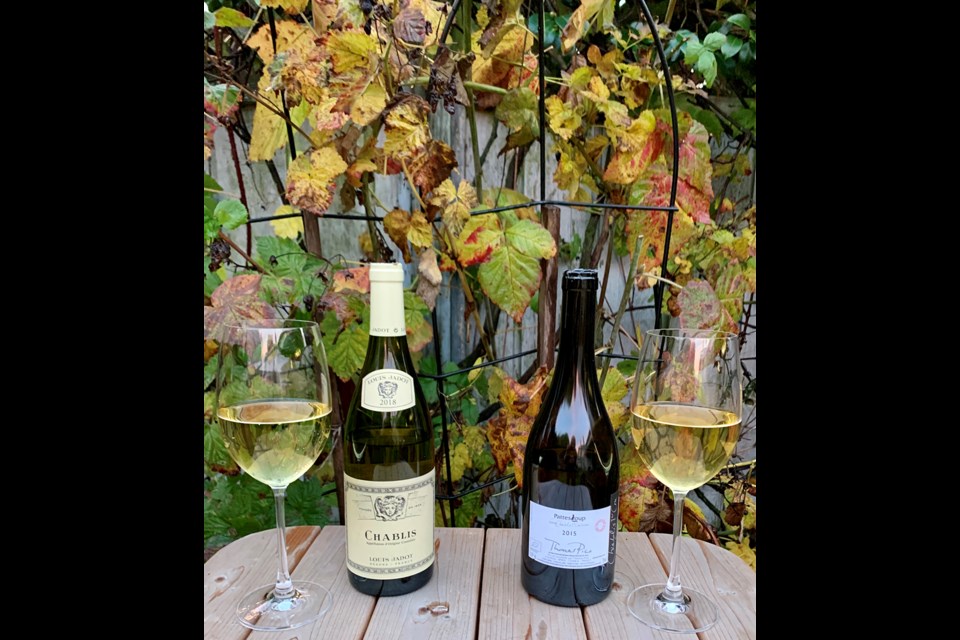If you want to experience one of the most unique white wines, Chablis is the one! It’s from a small region in northern Burgundy although it’s closer to Champagne than it is to the rest of Burgundy in the south.
There's only one grape in Chablis -- Chardonnay. And because it is grown further north, it shares more of Champagne’s characteristics than other Chardonnays, especially its bracing acidity.
Louis Moreau, vice-president of the Chablis Commission and proprietor of Domaine Louis Moreau states, “Chablis is a crystal clear expression of terroir.” Chablis winemakers want to emphasize the terroir of the calcareous soil that infuses complexity to the aroma and flavour. They also want to take advantage of the cooler climate, which maintains high acidity making the wine food friendly and allowing it to age gracefully.
There are four levels of appellations in Chablis. At the top are the seven Grand Cru vineyards which are located on a single hillside near the town of Chablis. They represent about 1 per cent of the annual Chablis production.
Second in quality are the 40 Premier Cru vineyards. Soil and slope play a major role in delineating the quality differences. Many of the Premier Crus and all the Grand Crus vineyards are planted along the valley of the Serein River located on southwest facing slopes, allowing the grapes to ripen better.
All of the Grand Cru and Premier Cru vineyards are planted on Kimmeridge Clay, the region's oldest soil dating back to the Jurassic Period. It’s a calcareous soil, once a seabed, containing fossilized oyster shells that impart a mineral, flinty character to the wines. These Chablis are fermented in stainless steel but many of them are aged in neutral oak, imparting a subtle texture without adding heavy oak flavour. These two top levels can age for up to 20 years. As they age their character gets transformed into a myriad of intriguing aromas and flavours.
The third level, Chablis, is the largest in vineyard planting and Petit Chablis is the newest and the most affordable. These two produce wines that are simpler and best enjoyed in their youth.
Thanks to the Bourgogne Wine Board, I recently participated in a virtual Chablis tasting where I tasted the Louis Jadot 2018 Chablis ($30). The grapes were grown on Kimmeridge Clay and were fermented and aged in stainless steel. This Chablis is fresh and light with vibrant acidity with a lemon bouquet and flavour. And there’s the chalky minerality from the soil with a dry, subtlety toasted finish. Not available at BC Liquor Stores.’
Another Chablis I sampled was the 2018 William Fevre Chablis Champs Royaux ($36.99). The gentle aroma reveals pears, lemon verbena, and a chalky smell of oyster shells. The flavour is austere with minerality and very crisp acidity. Its bone-dry finish includes a vibrant lemon taste that goes on and on. Available at BC Liquor Stores.
I also tasted the 2015 Thomas Pico Pattes Loup Premier Cru Chablis ($99.99). The grapes are planted in a more premium location facing south west, organic, manually harvested, fermented with indigenous yeasts in oak barrels, and given longer bottle aging. Consequently, it’s more multi-dimensional than the other two Chablis. The colour is golden compared with the Chablis’ medium straw hue. It has a peach aroma with chalk and toasty earthy scents. And there is more chalk and wet stones in the flavour, less citrus, and a lengthier finish. Drink now until 2035! Premium Crus are recommended to serve with lobster. Available through Sedimentary Wines.
The standard match with Chablis is a raw oyster on the half shell. To maximize the flavour of the shellfish and the wine, don’t add anything to the oyster; no lemon, vinegar, or seafood sauce! And because Chablis is subtler than New World Chardonnays, do not serve it too cold. Cool is what you want.



